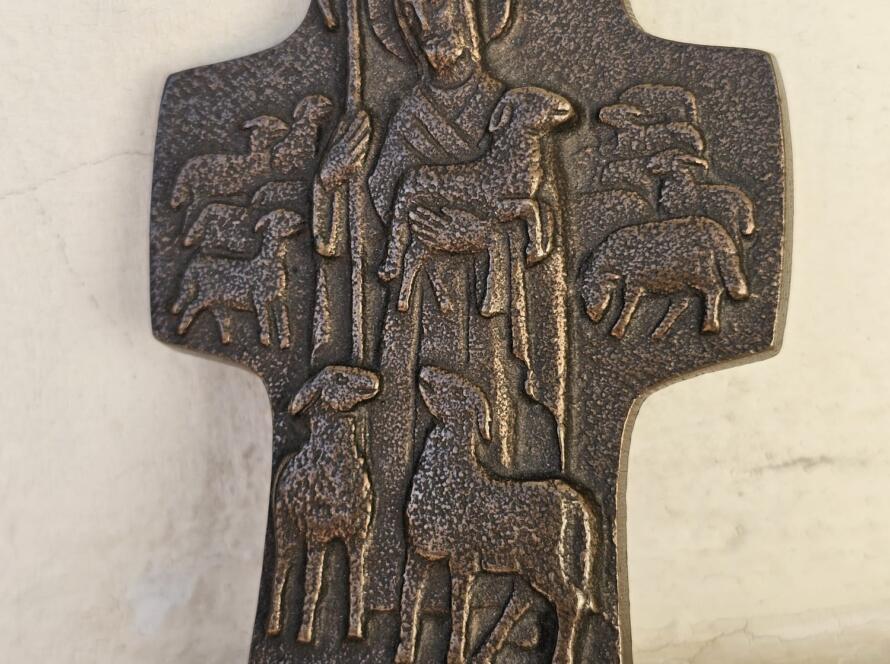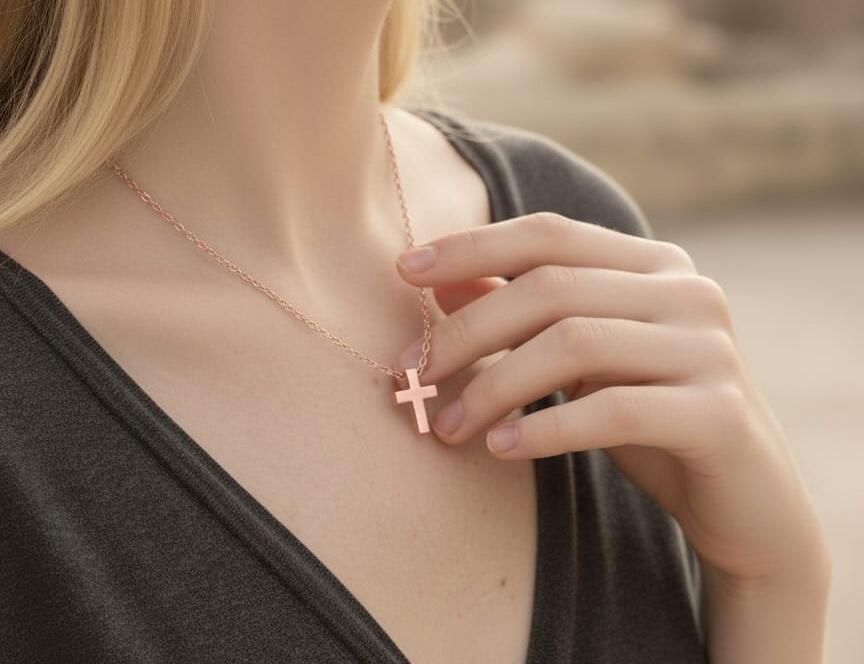Summary
The Hamsa Hand Meaning in Christianity
Symbolism, history, and how Christians interpret (or avoid) this ancient sign
The Hamsa Hand Meaning in Christianity
Symbolism, history, and how Christians interpret (or avoid) this ancient sign
Introduction — A Symbol Older Than Religion Itself
The Hamsa Hand (also called the Hand of Fatima, Hand of Miriam, or Hand of Mary depending on the culture) is one of the world’s oldest protective symbols.
It appears across the Middle East, long before Islam or modern Judaism existed. Archaeologists have found versions of it in:
-
ancient Phoenician cultures
-
Carthage and North Africa
-
Mesopotamia
-
pre-Israelite Canaanite societies
It is universally associated with protection, blessing, and the presence of the divine.
But what about Christianity?
Does the Hamsa have a place in Christian symbolism?
Is it permitted?
Does it conflict with Christian belief?
Or can it be interpreted through a Christian lens?
Let’s explore.
1. The Hamsa in Christian History — Yes, It Exists
Most people believe the Hamsa is only:
-
Islamic (Hand of Fatima), or
-
Jewish (Hand of Miriam)
But in the early Christian world, the symbol also appears.
Early Christians in the Middle East used the Hamsa as a protective sign, often combined with:
-
a cross
-
a fish (Ichthys)
-
or a Christogram (XP for Christ)
In Christian adaptation, the Hamsa was often called:
“The Hand of Mary”
— a reference to Mary, the mother of Jesus, representing:
-
maternal protection
-
purity
-
intercession
-
blessing
In Eastern Christian communities (especially in Lebanon, Syria, Palestine, and Egypt), the Hamsa hand appears in:
-
door frames
-
jewelry
-
iconography
-
liturgical folk art
Not as superstition, but as a cultural expression of divine protection.
2. What the Hamsa Represents in a Christian Context
When adapted into Christianity, the Hamsa hand takes on meanings rooted in the Christian worldview.
1. The Hand of God’s Protection
In Scripture, God’s hand symbolizes:
-
protection
-
guidance
-
blessing
-
deliverance
Examples:
“I have engraved you on the palms of My hands.” (Isaiah 49:16)
“Your right hand holds me fast.” (Psalm 63:8)
The Hamsa becomes a visual symbol of that truth.
A reminder that the believer is held in God’s protective grasp.
2. The Hand of Mary
In Christian tradition — especially Catholic and Eastern Orthodox — Mary symbolizes:
-
purity
-
intercession
-
motherly care
-
spiritual protection
So the Hamsa becomes:
A symbol of the gentle, protective motherhood of Mary over the faithful.
When a cross is added to the center of the hand, the meaning becomes distinctly Christian.
3. The Eye Inside the Hand — Christ as the “All-Seeing Lord”
The “eye” in the Hamsa symbol is often explained as:
-
the watchful eye of God
-
Christ seeing and guarding His people
-
awareness of spiritual danger
This resonates with passages like:
“The eyes of the Lord are on the righteous.” (Psalm 34:15)
And Jesus’ words:
“I am with you always.” (Matthew 28:20)
4. A Symbol Against Evil — Reframed Through Christ
Christianity teaches that:
-
evil is real
-
spiritual warfare exists
-
Christ protects His people
So the Hamsa is not seen as a magical charm,
but as a symbolic reminder of:
Christ’s power over darkness.
The symbol only becomes un-Christian if someone attributes magical power to it rather than trusting God alone.
**3. Is the Hamsa Biblical?
Not directly — but its themes are.**
The Hamsa symbol itself does not appear in the Bible.
However, the themes it represents are deeply biblical:
-
God’s protective hand
-
divine blessing
-
spiritual vigilance
-
trust in God against evil
-
the maternal protection of Mary (in Catholic & Orthodox contexts)
So for Christians, the symbol’s validity depends on intention, not shape.
4. Is It Allowed for Christians? (Different viewpoints)
Different Christian traditions view the Hamsa differently:
Catholic & Eastern Orthodox
Generally Accepting
Why?
-
They use symbolism broadly
-
They honor sacred art, icons, and cultural expressions
-
They emphasize the maternal protection of Mary
-
Many Middle Eastern Christian communities have used the Hamsa for centuries
For them, a Hamsa with a cross, Mary, or Christ symbol is perfectly acceptable.
Protestant / Evangelical
Divided
Some consider it:
-
cultural
-
harmless
-
a reminder of God’s protection
Others avoid it because of:
-
association with non-Christian religions
-
fear of superstition
-
misunderstanding of the symbol
It depends on the believer’s conscience.
Strict Fundamentalist Views
Often Rejecting
These groups avoid any symbol with pagan roots, even if Christianized.
Yet… many Christian symbols — including the fish, the halo, and even some cross designs — also existed in pre-Christian cultures.
Christianity has always “redeemed” symbols.
5. Christian Meaning of the Hamsa with a Cross
When a Hamsa hand includes:
-
a Jerusalem Cross
-
a Crucifix
-
a Chi-Rho
-
a Holy Spirit dove
-
or an icon of Mary or Jesus
It becomes unmistakably Christian.
Such designs symbolize:
-
divine protection
-
the victory of Christ
-
God’s loving hand
-
Mary’s intercession
-
the Holy Spirit’s guidance
It is no longer simply a Hamsa —
it is a piece of Christian devotional art.
6. Does Christianity “replace” pagan meaning?
Yes — and this is important.
When Christians use cultural symbols, they reinterpret them through Scripture.
This follows the biblical pattern of:
-
Paul using pagan altars to preach Christ (Acts 17)
-
The early Church using pagan terms like Logos and Sophia
-
Christian symbols absorbing older regional imagery
Christianity does not fear symbols —
it redeems them.
7. A Simple Christian Interpretation of the Hamsa
You can summarize the Christian meaning of the Hamsa in one sentence:
“God’s protective hand rests upon me, guarding me from harm.”
If the symbol contains:
-
a cross
-
Christ
-
Mary
-
biblical words
its meaning becomes fully aligned with Christian belief.
8. When Should Christians Avoid It?
Only when:
-
it is treated as a magical charm
-
it replaces trust in God
-
it is used for occult practice
-
someone believes the object itself has power
Christianity teaches:
The power is in Christ, not in symbols.
Symbols only point to Him.
**Conclusion — The Hamsa Hand in Christianity:
A Symbol of Protection, Reimagined Through Christ**
The Hamsa hand is not inherently Islamic, Jewish, or pagan.
It is a Middle Eastern protective symbol thousands of years old —
and Christianity has used it too.
When interpreted through the Christian lens, it becomes:
-
the Hand of God’s protection,
-
the Hand of Mary’s intercession,
-
a reminder of Christ’s victory over evil,
-
a symbol of spiritual vigilance,
-
and a piece of sacred cultural art.
Used correctly and faithfully, the Hamsa hand can be a powerful Christian reminder:





